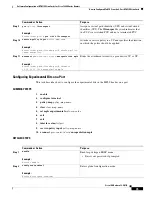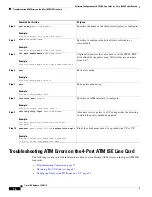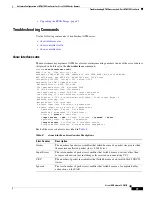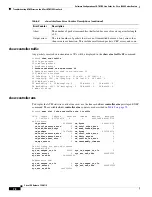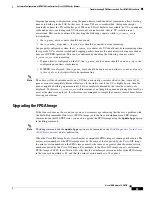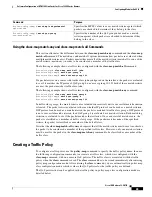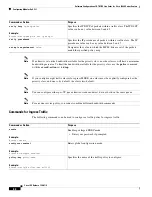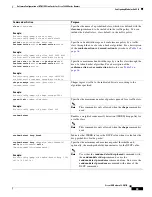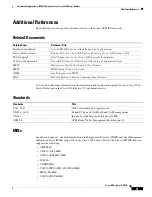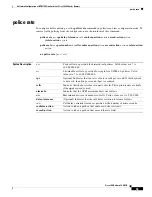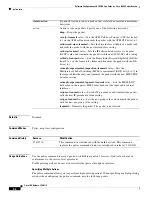
Software Configuration of ATM ISE Line Cards for Cisco 12000 Series Routers
Troubleshooting ATM Errors on the 4-Port ATM ISE Line Card
83
Cisco IOS Release 12.0(27)S
Improper queueing configuration, using the queue-limit or random-detect commands, allows for long
queues to build up in the SAR. In this case, if some VCs are oversubscribed, their queues might
eventually exhaust the TX cell buffer pool. When no TX cell buffers are available, no VC can enqueue
outbound packets, including such VCs that are not oversubscribed; that is, VC isolation is not
maintained. This can be confirmed by checking the following counters while
tx_resource_err
is
incrementing:
•
the
tx_queue_depth
counter should be zero and
•
the
tx_random_drops
and
tx_thresh_drops
should be constant, not incrementing.
In a properly configured system, the
tx_resource_err
counter of a VC should only be incrementing when
this specific VC is oversubscribed and dropping packets because the queue limit is being exceeded or
because of WRED operation. This can be confirmed by checking the following counters while
tx_resource_err
is incrementing:
•
If queue limit is configured on the VC, the
tx_queue_depth
counter should be non-zero, up to the
configured queue limit at maximum.
•
If WRED is configured, then
tx_queue_depth
should be non-zero, and either
tx_random_drops
or
tx_thresh_drops
(or both) will also be incrementing.
Note
The above will be observable easily on a VC that is constantly oversubscribed, so that (some of) its
queues are never completely drained. However, if the traffic sent to the VC is highly bursty, then the
queues might be building up momentarily, but be completely drained by the time the counters are
displayed. In this case,
tx_resource_err
will increment, even though the queue depth might be small (or
zero) at the time it is displayed. It is therefore recommended to sample the counters several times before
drawing conclusions.
Upgrading the FPGA Image
If the line card does not boot and you receive an error message indicating that there is a problem with
the Field-Programmable Gate Array (FPGA) image (or if the line card alphanumeric LED display
remains frozen in IOS STRT state), you need to upgrade the FPGA image using the
update-fpga
option
in the
diag
command.
Note
The
diag
command and the
update-fpga
option are documented in the
Field Diagnostics for the Cisco
12000 Series Internet Router
publication.
When the Cisco IOS image boots, it verifies that a compatible FPGA image is running on the router. The
major version number of the FPGA image must be the same as that expected by the Cisco IOS image;
the minor version number on the FPGA image must be the same as or greater than the minor version
number expected by the Cisco IOS image. For example, if the Cisco IOS image expects a minimum
FPGA image of 03.02, the software will verify that the actual major version number of the FPGA image
in the line card bootflash is 03, and that the minor version number is 02 or above.







